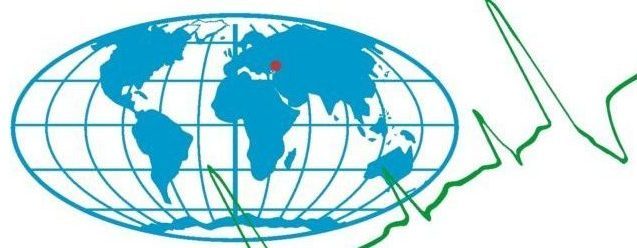E.N. Sibirtsova, A.V. Temnykh, M.I. Silakov
A.O. Kovalevsky Institute of Biology of the Southern Seas of RAS, RF, Sevastopol, Nakhimov Av., 2
E-mail: elenasibircova@yandex.ru
DOI: 10.33075/2220-5861-2021-4-91-101
UDC [551.351:628.4.043](262.5)
Abstract:
A study of the concentration of microplastic pollution (MP) in the bottom sediments of the water areas of the Sevastopol region in 2018–2020 was carried out. The objects of research were popular beaches located in the vicinity of Sevastopol and equipped with the appropriate infrastructure: tent areas, rescue stations, showers, toilets, attractions, etc. These beaches were designated as recreation zones (RZ). Two beaches with coastal morphology, convenient for entering the water, but with the absence of any infrastructure and a massive flow of tourists, were chosen as control areas (CA). Samples were taken using a manual bottom grab with a capture area of 0.04 m2 in duplicate at a distance of 2, 10, 20, and 50 m from the water edge.
An increase in MP was registered practically in all areas. The maximum values of the increase in the concentration of MH 5.5–6 times in bottom sediments were recorded on beaches with open water area and park-natural adjacent territory, as well as in the control area located near the mouth of the Chernaya River. The average values of MP concentration in the RZ and CA were 13.4 and 9.0 items∙kg-1 (dry weight), respectively. As for the shape of microplastics (MPs) particles, the maximum share was made up by fragments (50–83%), fibers were also numerous (33%). Granules and pellets accounted for no more than 10%. A significant increase in the concentration of MP on the 0–20 m section from the water edge of the underwater coastal slope was recorded in areas with an open water area and presence of a cliff. The revealed level of MP is comparable to that in the Mediterranean, Caspian, Baltic Seas, but an order of magnitude lower than in other regions of the World Ocean.
Keywords: microplastics, plastic litter, underwater coastal slope, aquatic area, beaches, Black Sea.
To quote:
REFERENCES
- Tourinho P.S., Kocí V., Loureiro S., and van Gestel C.A.M. Partitioning of chemical contaminants to microplastics: sorption mechanisms, environmental distribution and effects on toxicity and bioaccumulation. Environmental Pollution, 2019, Vol. 252, pp. 1246–1256.
- Smith M., Love D.C., Rochman C.M., and Neff R. Microplastics in seafood and the implications for human health. Current Environmental Health Reports, 2018, Vol. 5 (3), pp. 375–386.
- Akhbarizadeh R., Moore F., and Keshavarzi B. Investigating microplastics bioaccumulation and biomagnification in seafood from the Persian Gulf: a threat to human health? Food Additives and Contaminants, 2019, Vol. 36, pp. 1696–1708.
- Hurley R., Rothwell J., and Woodward J.J. Microplastic contamination of river beds significantly reduced by catchment-wide flooding. Nature Geoscience, 2018, Vol. 11 (4), pp. 251–257.
- Hengstmann E., Tamminga M., Bruch C., and Fischer E.K. Microplastic in beach sediments of the Isle of Rügen (Baltic Sea). Marine Pollution Bulletin, 2018, Vol. 126, pp. 263–274.
- Sibircova E.N. Mikroplastikovoe zagryaznenie gruntov plyazhej g. Sevastopolya v letnij period 2016–2017 gg (Microplastic pollution of Sevastopol beach sediments in the summer 2016–2017.). Ekologicheskaya bezopasnost’ pribrezhnoj i shel’fovoj zon moray, 2018, No. 1, pp. 64–73.
- Chouchenea K., Da Costac J.P., Walia A., Girão A.V., Hentati O., da Costa Duarte A., RochaSantos T., and Ksibi M. Microplastic pollution in the sediments of Sidi Mansour Harbor in Southeast Tunisia. Marine Pollution Bulletin, 2019, Vol. 146, pp. 92–99.
- Pozdnyakov Sh.R., Ivanova E.V., Guzeva A.V., Shalunova E.P., Martinsona K.D., and Tikhonova D.А. Issledovanie soderzhaniya chastic mikroplastika v vode, donnyh otlozheniyah i gruntah pribrezhnoj territorii Nevskoj guby Finskogo zaliva (Study of the content of microplastic particles in water, bottom sediments and soils of the coastal territory of the Neva Bay of the Gulf of Finland). Vodnye Resursy, 2020, No. 47 (4), pp. 411–420.
- Exposito N., Rovira J., Sierra J., Folch J., and Schuhmacher M. Microplastics levels, size, morphology and composition in marine water, sediments and sand beaches. Case study of Tarragona coast (western Mediterranean). Science of The Total Environment, 2021, Vol. 786 (1):147453.
- Manbohi A., Mehdinia A., Rahnama R., Dehbandi R., and Hamzehpour A. Spatial distribution of microplastics in sandy beach and inshore-offshore sediments of the southern Caspian Sea. Marine Pollution Bulletin, 2021, Vol. 169, 112578
- Hien T.T., Nhon N.T.T., Thu V.T.M., Quyen D.T.T. and Nguyen N.T. The Distribution of Microplastics in Beach Sand in Tien Giang Province and Vung Tau City, Vietnam. Journal of Engineering and Technological Sciences, 2020, Vol. 52 (2), pp. 208–221.
- Jiwarungrueangkul T., Phaksopa J., Sompongchaiyakul P., and Tipmanee D. Seasonal microplastic variations in estuarine sediments from urban canal on the west coast of Thailand: A case study in Phuket province. Marine Pollution Bulletin, 2021, Vol. 168, 112452.
- Karkanorachaki K., Kiparissis S., Yiantzi E., Psillakis E., Kalogerakis N. and Kalogerakis G. Plastic pellets, meso- and microplastics on the coastline of Northern Crete. Marine Pollution Bulletin, 2018, Vol. 133, pp. 578–589.
- Sibircova E.N. and Agarkova-Lyah I.V. Metodika izucheniya mikroplastikovogo zagryazneniya v plyazhnyh i donnyh otlozheniyah razlichnogo granulometricheskogo sostava (Methods for studying microplastic pollution in beach and bottom sediments of various granulometric composition). Sistemy kontrolya okruzhayushchej sredy, 2019, No. 1 (35), pp. 136–145.
- Besley A., Vijver M., Behrens P., and Bosker T. A standardized method for sampling and extraction methods for quantifying microplastics in beach sand. Marine Pollution Bulletin, 2017, Vol. 114, No 1, pp. 77–83.
![]()
